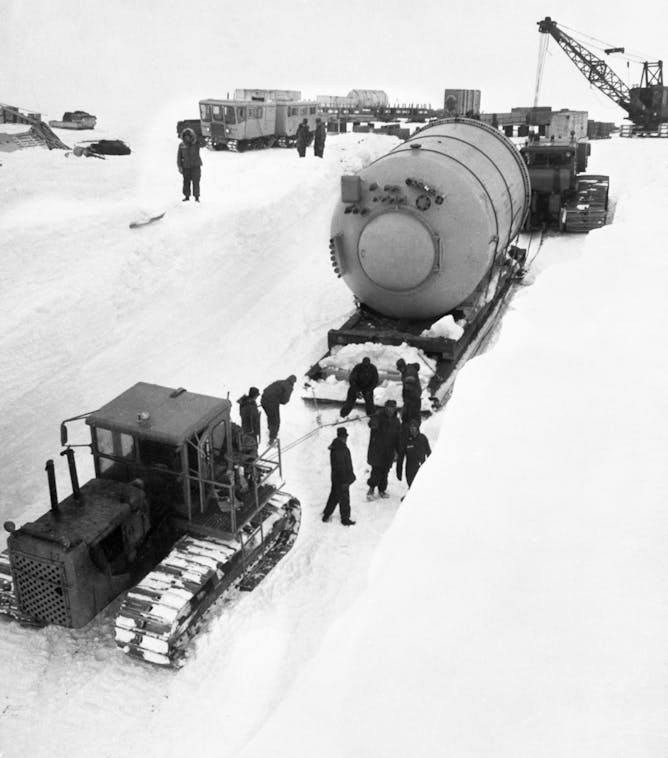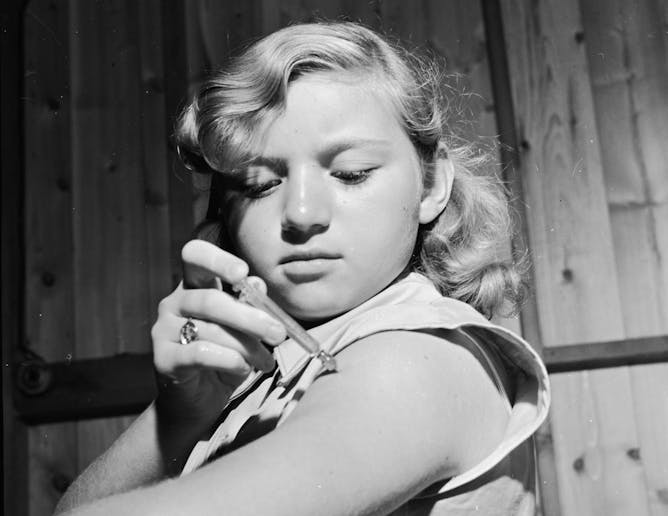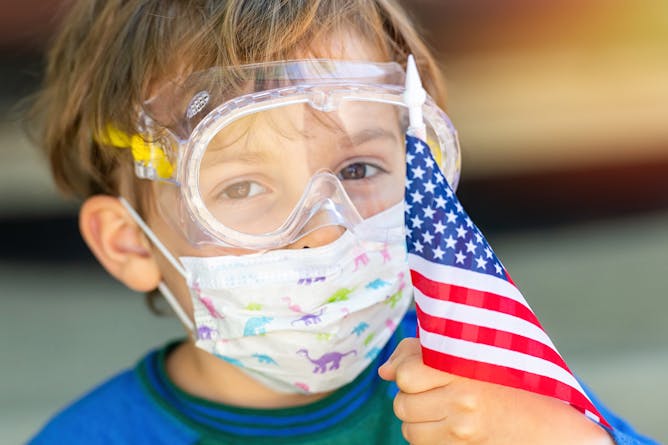|
If you’re a regular reader of The Conversation, you know that we often turn to historians to help provide context about today’s events. Other times, it’s just to tell us a good, perhaps little-known story. Two stories this week deliver on both counts.
One is the amazing tale of Camp Century, a U.S. Army base that was built into the Greenland ice sheet in the 1960s and powered by the military’s first portable nuclear reactor. It’s a story of radiation leaks and skyrocketing cleanup costs among the first generation of portable reactors. The article’s author argues it’s relevant now as the military plans a new generation of mobile nuclear reactors for remote bases and possibly the battlefield.
Another history of science story is by UC Davis biomedical engineer James Brody, who connects the dots from the discovery of insulin 100 years ago to the development of practical treatments. Along the way, he writes about scientists grinding up pig pancreases and borrowing mass production techniques from beer makers.
At the same time, every week Conversation editors reach out to scientists who write about their research and help answer the most pressing questions of the day. This past week, we contacted pediatrics professor Judy Martin from the University of Pittsburgh to explain what parents need to know about COVID-19 vaccines for children under 12, which are expected next winter. In explaining the timing of these vaccines, she makes a key medical point: “Children are not just littler grownups; their bodies differ from adults’ in important ways.”
Also today:
Please reply to this email if there are any questions you would like or team of science editors to investigate.
|

Part of a portable nuclear power plant arrives at Camp Century in 1960.
Bettmann Archive/Getty Images
Paul Bierman, University of Vermont
Nearly 60 years after a radiation-leaking reactor was removed from a US Army base on the Greenland ice sheet, the military is exploring portable nuclear reactors again.
|

A single brilliant insight is only part of the story of how diabetes became a manageable disease.
Douglas Grundy/Three Lions via Getty Images
James P. Brody, University of California, Irvine
A biomedical engineer explains the basic research that led to the discovery of insulin and its transformation into a lifesaving treatment for millions of people with diabetes.
|

The freedom of going mask-free is still a ways off for kids under age 12.
Juan Monino/E+ via Getty Images
Judy Martin, University of Pittsburgh
As many teens and adults in the US restart their social lives, parents of children under the age of 12 wonder when their kids will also be able to experience the freedom that comes with vaccination.
|
|
|
-
Luke Montrose, Boise State University
New research found that smoke from the Camp Fire in Paradise, California, carried high concentrations of lead. An environmental toxicologist explains what else you're breathing and how to stay safe.
-
Aaron W. Harrison, Austin College
While the COVID-19 pandemic raged on, the opioid epidemic got worse as drug overdose deaths soared. New research proposes a way to chemically modify opioids to reduce the risk of addiction.
-
Justin Vesser, University of Virginia
Ongoing tracking is meant to spot very rare risks – like the connection between the Johnson & Johnson shot and Guillain-Barré syndrome. And it relies on public reporting.
-
A.R. Siders, University of Delaware; Katharine Mach, University of Miami
Done right, managed retreat redesigns communities to be better for everyone. Here's how it's evolving for the future.
-
Jean-Luc Margot, University of California, Los Angeles
Billions of galaxies are in the universe, with billions of stars in every galaxy. Could billions of planets be out there too?
|
|